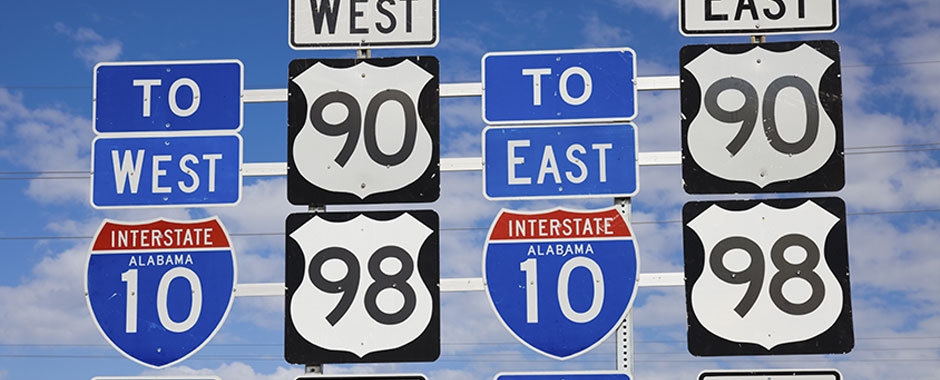If you’re not sure what to consider when shopping for traffic signs, our guide breaks down the basics—but your manufacturer can help you navigate the specifics.
Buying traffic signs is a surprisingly complex process—there are several technical aspects and many safety regulations with frequent updates. There are no shortcuts because doing it right means keeping drivers safe for years to come. Take the time to discuss what to consider when shopping for traffic signs with your sign fabricators.
MUTCD Compliance
The Manual on Uniform Traffic Control Devices governs this signage, so work with a company that knows its laws inside and out. There are standards for size, shape, locations, and even something as seemingly simple as color.
Retroreflectivity
Traffic signs are very effective if you can’t see them. So, the sheeting on each sign must meet MUTCD requirements for retroreflectivity, which allows light to reflect back to the vehicles for the highest visibility, even in low light and at night. These requirements vary for each sign type and sheeting. In addition, the retroreflective layer must match the color of your sign exactly.
Sheeting
You’ll want the sheeting materials that best fit your needs and sign location.
Engineer Grade Sheeting
This less expensive variety is usually found in parking areas and lower-risk locations. Inside the sheeting are glass beads that reflect the light off their round edges. They are not as bright as the more expensive options but are effective enough in lower speed, well-lit situations.
High-Intensity Prismatic Sheeting
HIP technology from 3M uses prisms, which are much more effective than beads; HIP has more than five times the retroreflectivity of Type I engineer-grade sheeting and 25 percent more optical efficiency. This is the most popular sign sheeting. It’s a bit more expensive than engineer grade but lasts longer and is more effective in low light conditions.
Diamond Grade Sheeting
3M’s diamond-grade sheeting has the highest retroreflectivity. It can be seen from the farthest distances at night. The added expense might not be worth it if the sign is in an already well-lit or low speed area, but is ideal for high volume, higher speed and high risk areas.
Digital Printing
The quality of digital printing can vary with online sign companies, and you don’t want your signs to fade and become unreadable. CPC Signs utilizes 3M's Matched Component System which is the gold standard and the most responsible way to print signs for safety.
“Greener” Signs
As sheeting technology evolves, it’s proving better for the environment, too. For instance, compared to glass bead sheeting, the manufacturing process for prismatic sheeting reduces energy by 77 percent, VOC emissions by 97 percent, and solid waste by 46 percent.
Custom Products Corporation can show you what to consider when shopping for traffic signs—and there’s a lot to look over. We’ve been making signs for more than 30 years, with sales in all 50 states and internationally. Our custom traffic signs can maximize your budget as well as road safety. Contact us for guidance on buying the best.





